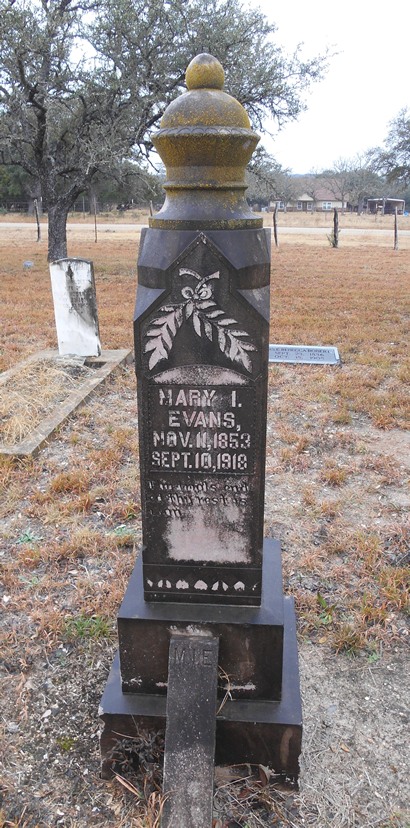Books by
Michael Barr
Order Here: |
|
The
cowboy is arguably the most familiar character in American popular
culture, but the cowgirl is a horse of a different color. Most of
us have a glossy image of a cowgirl in rhinestones and a fringed jacket,
but that image is a myth crafted by television and the movies. Women
who grew up working cattle for a living had a little less sparkle
and a little more grit.
Mary Taylor was a real Texas cowgirl. She was a lady who was the equal
of just about any man when it came to riding, roping and running a
ranch.
She was born on November 11, 1853 on a farm near Centerville
in Leon County, Texas.
Her parents died when Mary was young. An aunt from Willow
City took Mary in and raised her.
Mary had two younger brothers who grew up to be famous cowboys. Baxter
Taylor's specialty was bustin' broncs. Buck Taylor became a star in
Buffalo Bills' Wild West Show. He was the subject of dime novels.
People all over North America and Europe knew him as the King of the
Cowboys.
Sister Mary could do just about anything around the ranch her brothers
could do. By the time she was 13 she could rope steers and ride broncs.
She was a crack shot with a rifle.
Like her brothers she liked to show off. A newspaper story told of
the time she rode a paint horse to the top of Enchanted
Rock.
On October 12, 1870 Mary Taylor, age 16, married Thomas Andrew Evans,
a 36 year old Confederate veteran and stock raiser.
Mary and Tom lived and worked on the William Shelton Ranch on Crabapple
Creek, 5 miles from Willow
City. A few years later they started their own cattle ranch near
Nebo Mountain, 3 miles north of Eckert
in northeast Gillespie
County.
The 1870s were the days of the open range and the Hoo
Doo War. Outlaws and rustlers roamed the Hill
Country. It was a tough time to be in the cattle business.
Mary worked day and night to keep the ranch afloat. She cooked, kept
the house and worked cattle. She milked up to 35 cows a day. She gave
birth to 9 children. I wonder where she found the time.
When her husband died in 1900, Mary added ranch manager to her resume.
Her skills on horseback were known all over the Hill
Country. The Fredericksburg Standard described her as "an
expert horsewoman" who "knew the range as well or better than any
of the ranchmen of her section. She was a typical western lady and
the stranger within her gates was always given a cordial welcome and
true western hospitality."
Early in the morning on September 10, 1918 Mary started for Fredericksburg
in a hack pulled by a team of horses. She got to town around 11 o'clock,
bought seed wheat and a load of groceries and was on her way back
to the ranch by noon.
Her children expected her return by mid-afternoon, and when she was
late, her son Louis went looking for her.
Just after sundown Louis found his mother lying dead in a pasture
about two miles from the ranch. Groceries were scattered over the
pasture. The horses grazed quietly a short distance away still hitched
to the hack. There was no evidence of a runaway or foul play.
Justice A. W. Petmecky of Fredericksburg
held an inquest at the scene. The coroner ruled death by accident.
Mary Evans had asthma, and the best guess was that she had an asthma
attack and fell from the vehicle. One of the rear wheels rolled over
her. |
 |
Mary Evans'
Tombstone in Willow City Cemetery
Photo
courtesy Michael
Barr, November 2018 |
Joe Schaetter
& Son of Fredericksburg
prepared the body for burial at Willow City Cemetery. "The death of
Mrs. Evans," a writer for the Fredericksburg Standard lamented,
"marks the passing of one of the most picturesque characters in this
section of Texas."
Cowboy heroes in popular culture are too numerous to count, but cowgirls
icons are few and far between. Mary Taylor Evans of Willow
City was one of them. |
Willow City
Cemetery
Photo courtesy Michael
Barr, November 2018 |
© Michael
Barr
"Hindsights" December
30, 2018 Column
Sources:
"A Smart Cow-Woman," The San Saba News, July 5, 1889.
"Fredericksburg Woman Is Found Dead By Roadside," San Antonio Express,
September 13, 1918.
"Twenty-Three Years Ago," Fredericksburg Standard, September
18, 1941.
"Found Dead In Road," Fredericksburg Standard, September 14,
1918.
"Enchanted Rock Scene Of Famed Battle Between Rangers And Indians,"
Fredericksburg Standard, May 1, 1946. |
|
|
